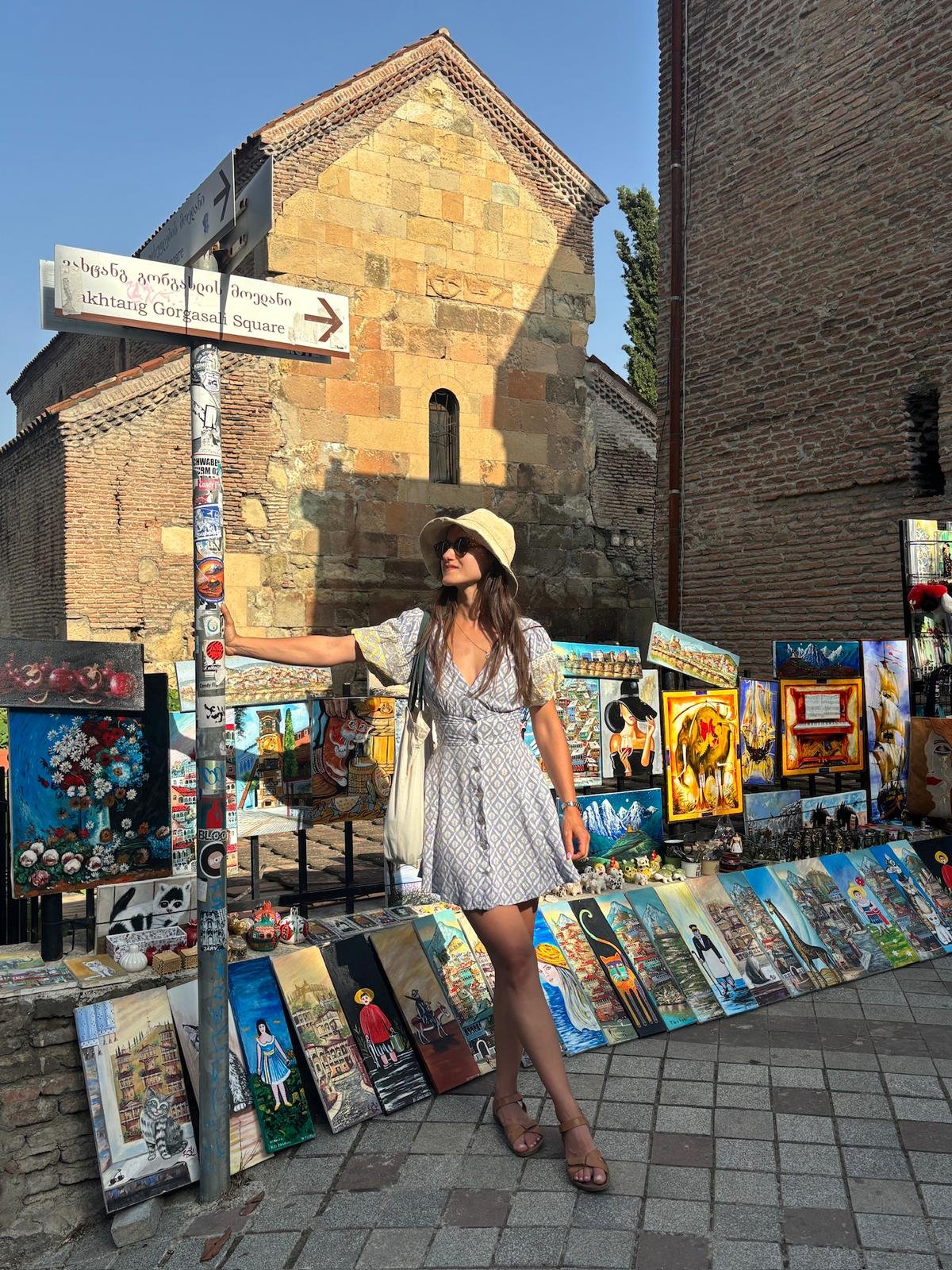Top 10 Places to See in Tbilisi
Tbilisi, the enchanting capital of Georgia, is a city brimming with history, charm, and adventure. Nestled along the scenic Mtkvari River and surrounded by lush hills, Tbilisi offers a captivating blend of ancient culture and modern flair. Wander through its maze-like cobblestone streets in the Old Town, where medieval churches, vibrant buildings, and cozy cafes invite you to explore.
From relaxing in the famous sulfur baths to savoring delicious Georgian cuisine, Tbilisi is a city that surprises and delights at every turn. Whether you’re a history buff, an art lover, or simply seeking breathtaking views, Tbilisi promises an unforgettable journey.
Short History Of Tbilisi
Tbilisi, founded in the 5th century by King Vakhtang I Gorgasali, has a history spanning over 1,500 years. Located at the crossroads of Europe and Asia, it became a vital hub for trade and culture.
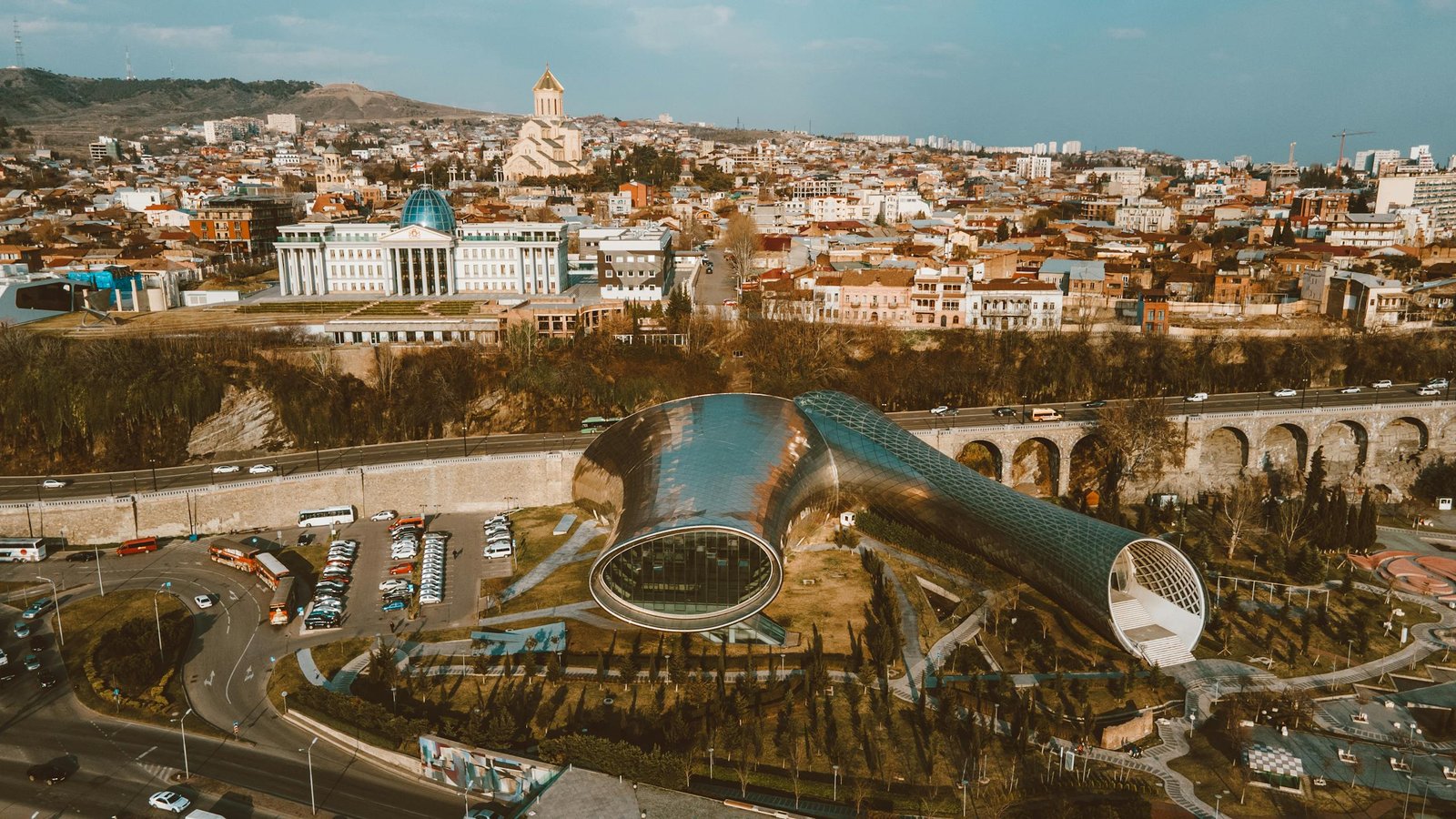
The second capital of the ancient Kingdom of Iberia, the city endured invasions by Arabs, Mongols, Ottomans, and Persians, shaping its architecture and culture. In the 12th century, under King David IV, Tbilisi thrived as the center of a unified Georgia.
After being ruled by Russia from the 19th century and during the Soviet era, Tbilisi grew into an industrial and cultural center. Since the Soviet Union’s collapse in 1991, it has modernized while preserving its rich heritage, known today for its blend of ancient history, diverse architecture, and dynamic arts scene.
Origin Of The Name “Tbilisi”
The myth of Tbilisi’s founding explains the city’s name and origin. According to legend, King Vakhtang I Gorgasali discovered a natural hot spring while hunting in the 5th century, after his falcon fell into it. Impressed by its therapeutic properties, the king decided to build a city around the springs.
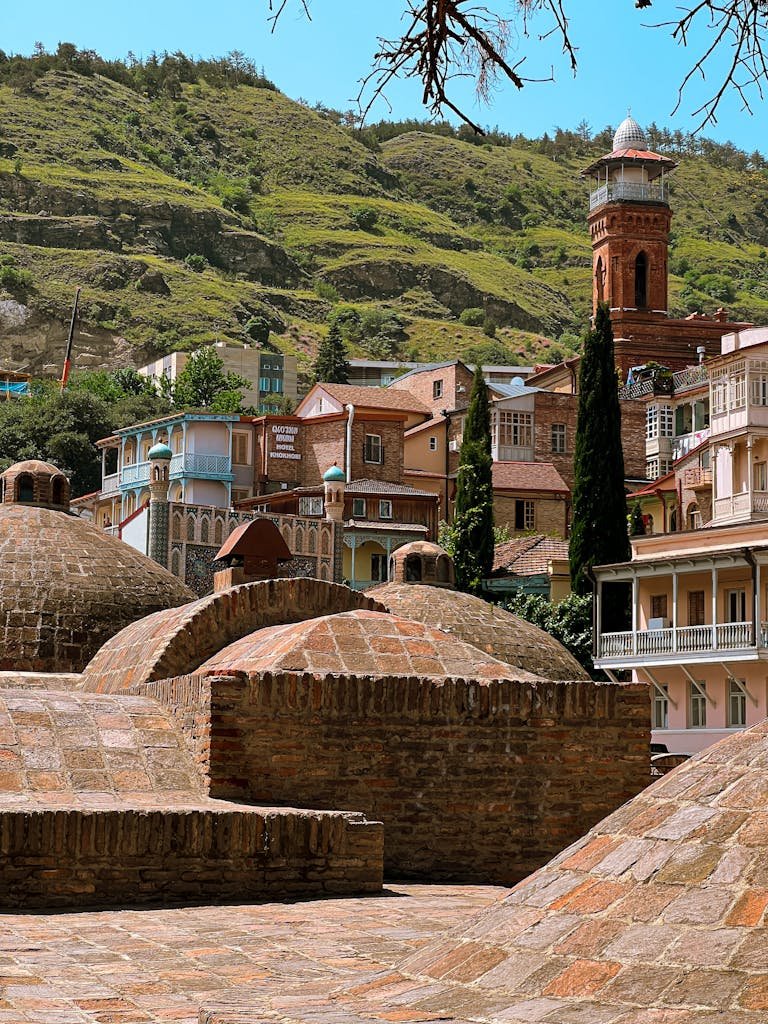
The name “Tbilisi” comes from the Georgian word “tbili,” meaning “warm,” reflecting the hot springs’ significance to the city’s foundation. Today, the Abanotubani district, known for its sulfur baths, remains one of Tbilisi’s oldest and most iconic neighborhoods, with a statue of the king’s falcon at its center.
Want a Totally Personalized Trip to Georgia?
We’re here to help you plan every detail of your visit — stress-free and tailored to your travel style. With our local expertise, we can assist you with:
- Booking hotels with exclusive discounts
- Reserving a reliable private driver or rental car
- Designing a custom itinerary based on your interests
- Recommending authentic food, cultural activities, and hidden gems
Top 10 Places to See in Tbilisi
Below is a list of the must-see places in Tbilisi that you simply can’t miss. From ancient fortresses and iconic cathedrals to quirky towers and scenic parks, these spots showcase the best of what Georgia’s capital has to offer.
Narikala Fortress
An ancient fortress overlooking Tbilisi and the Mtkvari River, Narikala dates back to the 4th century, making it the capital’s oldest structure. It offers stunning panoramic views of the city and is a great spot for photography. You can reach it by hiking or taking the cable car from Rike Park.
Sameba Cathedral (Holy Trinity Cathedral)
One of the largest religious buildings in the world, today Sameba is the main church of Georgia and the biggest orthodox church in the whole Caucasus region. Completed in 2004, its grand architecture combines traditional Georgian elements with modern design, and it boasts one of the most beautiful and exquisite Georgian icons and a peaceful garden.
Old Town (Sulphur Baths District, Meidan Square, Shardeni Street)
The heart of historic Tbilisi, the Old Town is known for its narrow, winding streets, colorful wooden balconies, and vibrant atmosphere. The must-see attractions here are the The Sulphur Baths district with 17 century-dated baths famous for their healing waters, Meidan Square with its underground Meidan bazaar (a great spot to buy unique souvenirs), and Shardeni Street is filled with cafes, bars, and art galleries.
Bridge of Peace
A modern architectural landmark designed by an Italian architect Michele De Lucchi, this pedestrian bridge made of glass and steel connects the Old Town to Rike Park. It features a stunning 1208 LED light display at night, symbolizing Georgia’s path from the past to the future.
Funicular to Mtatsminda Park
This historic funicular, originally built in 1905, takes you up Mtatsminda Mountain to an amusement park with rides, restaurants, and breathtaking views of Tbilisi. The funicular has been rebuilt several times, finally opened to the public in 2012. The funicular ride itself is an experience, offering scenic city views on the way up.
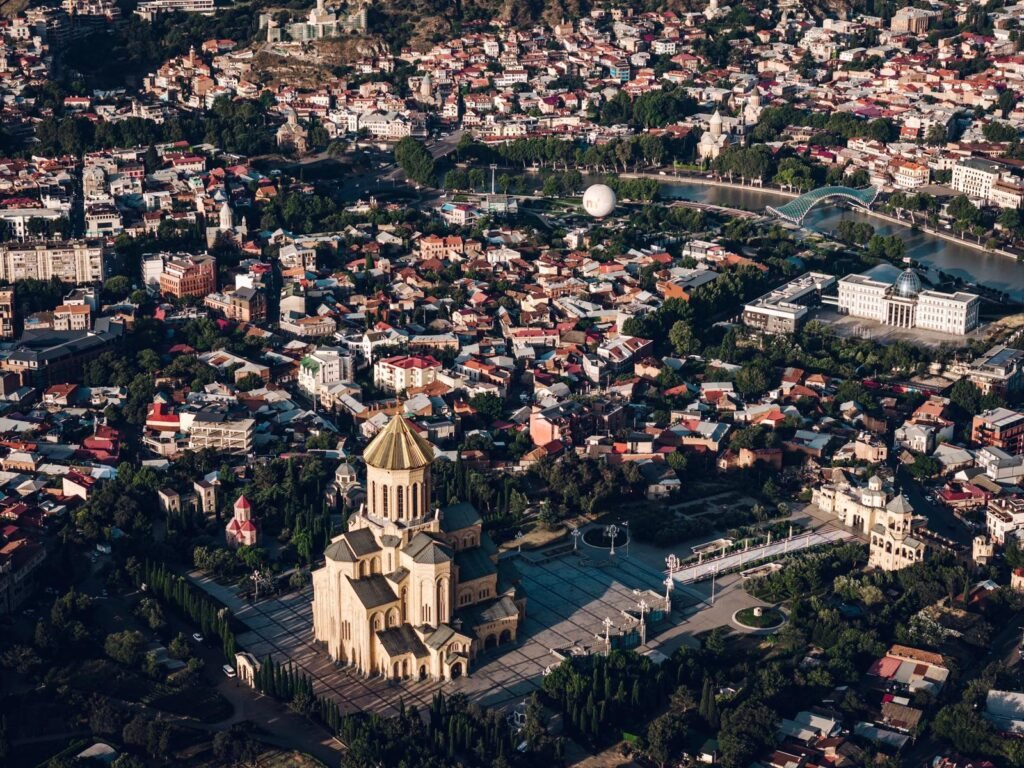
Chronicles of Georgia Monument
This massive Soviet-era monument is located on a hill overlooking the Tbilisi Sea. It was designed by the famous Georgian architect Zurab Tsereteli. The central feature of the Chronicles of Georgia is its 16 towering columns, divided into three horizontal levels. The bottom level depicts important biblical scenes, including Noah and the flood and The Last Supper. The middle layer, the tallest, showcases key figures from Georgian history, such as influential kings, queens, heroes, poets, and writers. The top layer illustrates vital Georgian traditions, including the wine harvest. This dramatic and photogenic site is best visited at sunset for the most striking views.
Rustaveli Avenue and Liberty Square
The main avenue in Tbilisi, Rustaveli Avenue, is lined with historic buildings, theaters, the 1887-dated State Ballet and Opera House, museums, shops, and cafes. At the end of the avenue, you’ll find the most beautiful square in the capital, Liberty Square, built in 1801. The square is famous for its golden statue of St. George slaying the dragon and its significant role in Georgian politics and culture
Gabriadze Clock Tower
Gabriadze Clock Tower is a quirky, leaning clock tower created by renowned puppeteer Rezo Gabriadze, located next to his marionette theater. Twice a day, at 12:00 and 19:00, a small puppet show called “The Circle of Life” is performed, attracting both tourists and locals. Additionally, at the hour, a puppet angel emerges from a balcony to ring the bell. The tower consists of many interesting decor elements, including Tbilisi’s smallest clock.
Dry Bridge Flea Market
An open-air flea market where you can find a fascinating mix of antiques, Soviet memorabilia, vintage items, paintings, and other Georgian souvenirs. It’s a great place to explore Georgian history and culture through its collectibles.
Rike Park Cable Car to Mother of Georgia Statue
The cable car from Rike Park takes you up to Narikala Fortress and the Mother of Georgia Statue, built in 1958 to celebrate the 2,500th anniversary of the founding of Tbilisi. The statue symbolizes the Georgian national character: a sword for enemies and a bowl of wine for guests. The spot also offers panoramic views of Tbilisi.
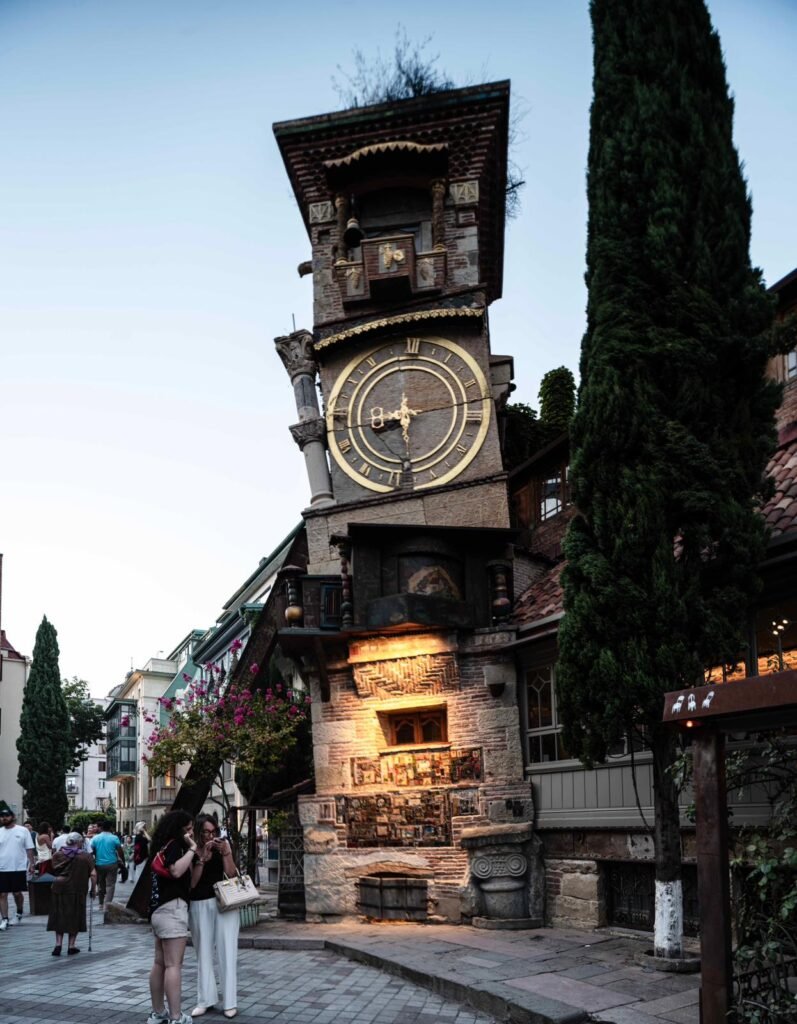
Beyond The Basics – An Ultimate Guide To Tbilisi
Want to go beyond the basics?
If you’ve enjoyed this list of Tbilisi’s must-see sights, wait until you explore what most tourists miss!
Unlock our exclusive guide to Tbilisi and discover:
- Hidden gems and off-the-beaten-path neighborhoods
- The best photo spots only locals know
- The city’s most scenic viewpoints
- Top cultural and fun activities you won’t find in guidebooks
- Our handpicked list of where to eat — from local favorites to hidden cafes
